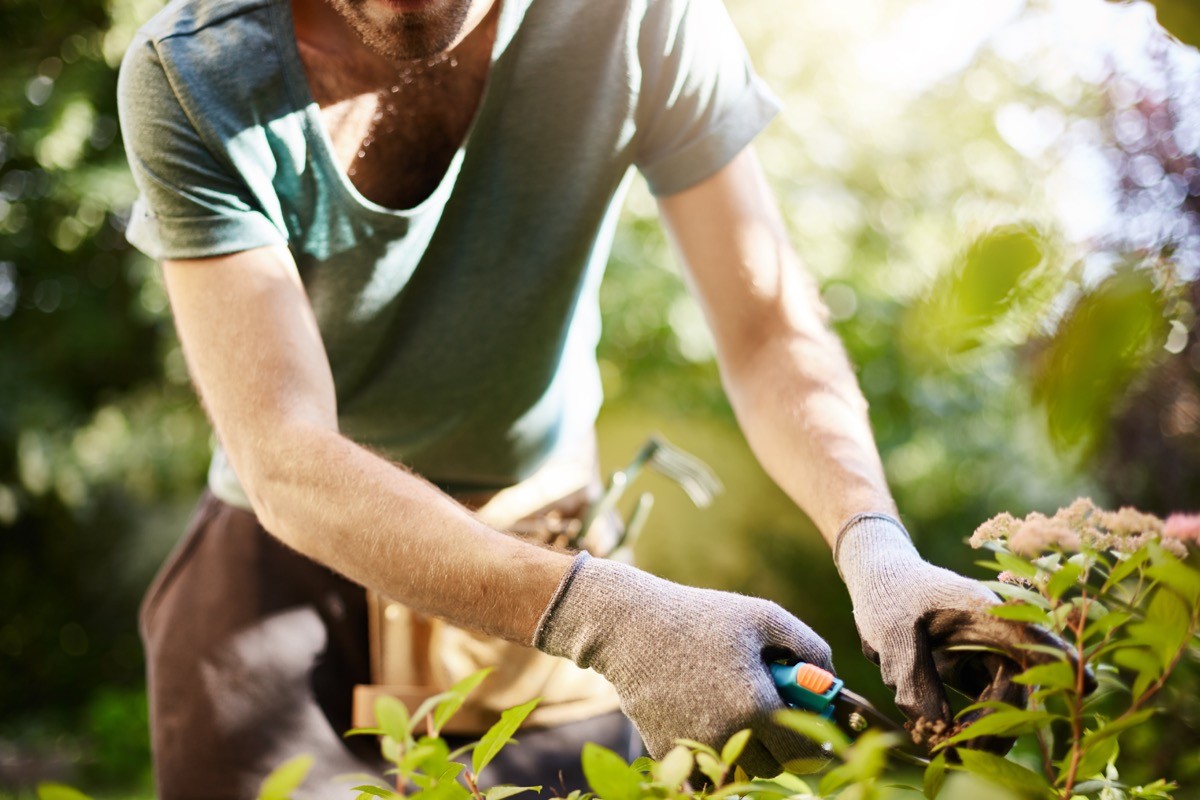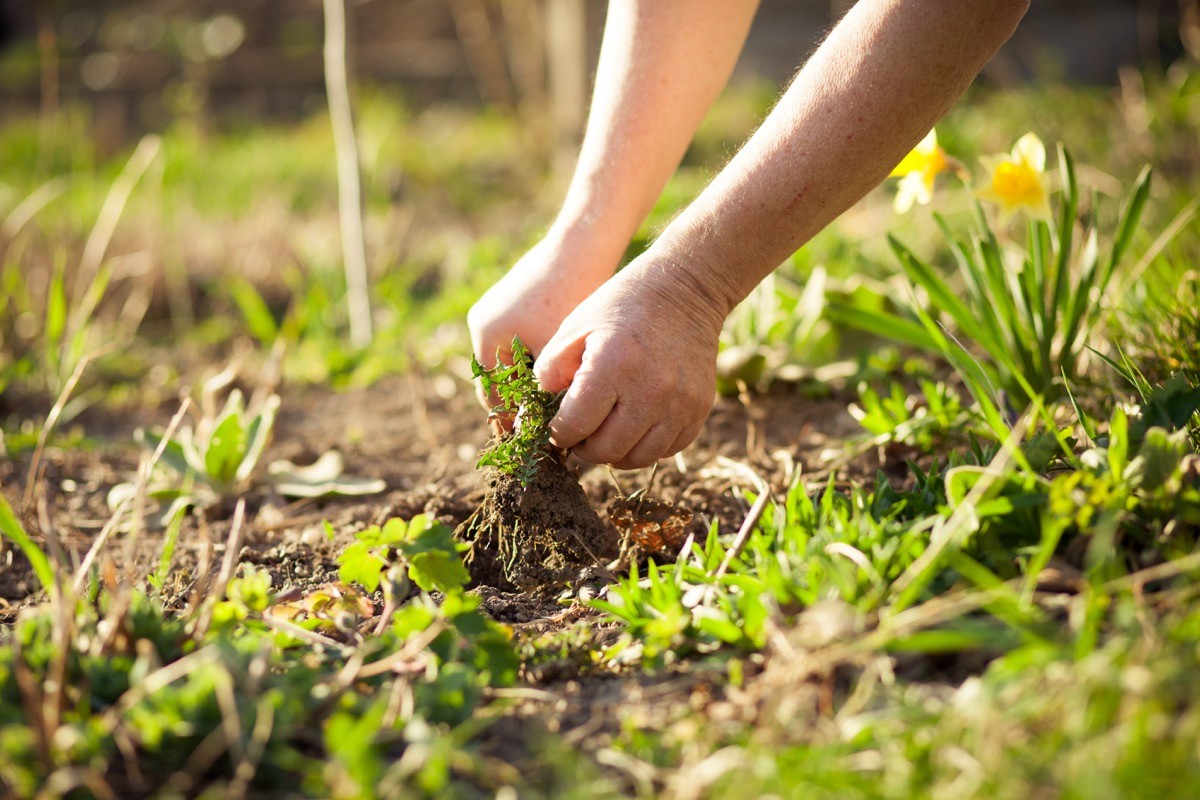Never Do These 4 Things to Your Garden in the Fall, Landscaping Expert Says

After the busy upkeep required during summer, fall marks the beginning of a big change in yardwork requirements for the year. Many gardeners take the opportunity to prolong the season or even get ahead of next year by putting down some new plants, while others opt to tidy up as things begin to go dormant. But before you start on too much maintenance, you might want to consider holding back on some tasks—both for the sake of your workload and the health of your plants. Read on for things you should never do to your garden in the fall, according to a landscaping expert.
RELATED: Best Reasons to Stop Raking Your Leaves, Experts Say.
1
Trim your perennials

Depending on where you live, gardeners preparing for the upcoming winter usually hit their yards with one last set of tasks to help ensure things will be in good shape the following spring. But in a recent video posted to Instagram, landscaping expert Kaleb Wyse (@wyseguide) explains that “there’s no reason to overwork in the fall” and cites a few specific tasks you might want to avoid.
To start, Wyse says you can hold off from clipping or deadheading some of the flowers you’re expecting to start blooming again next year.
“All the perennials that are spent and now going dormant and going to die back to the ground, just leave all their stocks [and] all their seed heads,” he says. “Birds will eat the seed heads sometimes. But also, beneficial insects live in all this foliage, and they’re great for your garden, so you want to have a habitat for them.”
2
Remove leaves from your garden

Raking and leaf removal likely rank near the top of any homeowner’s most dreaded fall tasks. Fortunately, you don’t have to worry about this issue on your plant beds.
“Don’t pick up all the leaves that have blown into your garden. In fact, you can blow more in!” says Wyse.
He explains that there are two unexpected benefits to letting foliage lie where it falls for the season.
“These actually sit and insulate your plants, more areas for habitats for insects. Also, leaves feed your garden as they compost in the soil. They’re super beneficial!” Wyse says.
RELATED: 12 Front Yard Landscaping Ideas That Will Transform Your Home.
3
Prune back your shrubs

Keeping your hedges and bushes well maintained is a regular part of garden upkeep during growing season. However, you might want to keep those shears tucked away now that things are getting colder.
“Do not be tempted to prune back shrubs in the fall,” Wyse cautions. “Pruning is actually really hard on things in late fall. It spurs new growth, which could just get frosted off with the cold weather. Leave them until spring so there’s less work to do.”
4
Forget to weed

Out of all general yard work, it’s safe to say that weeding is one job that’s never truly done. This apparently also applies to your autumn checklist, where getting a head start can actually help take some of the burden off of getting things ready next season.
“If you weed now and have [fewer] weeds, you’re going to have [fewer] that get bigger over the winter and then go into spring,” Wyse points out.